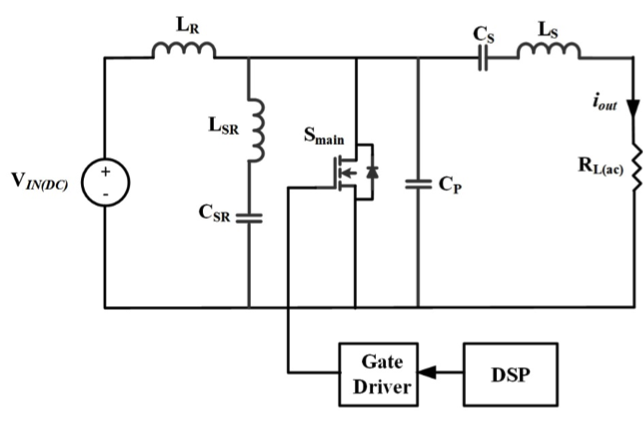Title: Design of A Modified Class EF2 Inverter For Electric Vechile Charging Through Wireless Power Transfer

Wireless power transfer (WPT) also referred as inductive power transfer (IPT) has the huge potentiality to revolutionize our way of electricity usage. This technology has found many applications like charging autonomous mobile devices like mobile phone, autonomous guided vehicles as well as industrial process system, biomedical implant and electric vehicle charging. These applications involve power transfer from small level (1 W) to a high level (10-20 kW) with a large air gap (5-50 cm).
A complete IPT system usually consists of several stages: grid or utility AC to DC conversion, the rectified DC to high-frequency AC conversion, primary compensation, WPT coils (loosely coupled transformer), secondary compensation and AC/DC/DC conversion. Among these, high-frequency DC/AC conversion plays a vital role to transfer high power, to increase gap distance and overall system efficiency. The focus of this research is to design and evaluate a single switch high-frequency resonant inverter for WPT vehicle charging application capable of transferring power up to 3 kW. Single switch resonant inverter topologies are potential for WPT application. The capability of operating with high frequency and high power, ease of control circuit design and compactness are some of the main features of these types of inverters.
In this research, a modified single switch resonant inverter termed as class EF2 will be designed and evaluated for standard vehicle charging system frequency (85-100 kHz). This is the major contribution of this research. A detail mathematical model is developed which includes the significant parasitic elements of the overall system on this frequency range. Furthermore, a series tuned passive resonant circuit is used for second harmonic termination which reduces the switching stress significantly from all other single switch topology. The placement of this passive resonant circuit for reducing switch stress and input DC-feed inductance characteristic is also analysed. Power transfer capability, switch stress and reactive power circulation during misalignment and coupling variation condition have been evaluated experimentally with constant frequency and with a frequency variation of 5-10%. Finally, inverter efficiency on perfectly align to 30% misalignment and variation of output voltage with load variation will be evaluated.
|
|
|
Last Update: 22/11/2022